mobile View, to the German Version tap the flag


- also: St. Martin
- possession of France
- Overseas community, autonomous and not part of France
- own name: Collectivité d'Outre-Mer de Saint-Martin
• Flag
• unofficial Flags
• historical Flags
• errant Flag
• Meaning/Origin of the Flag
• Coat of Arms
• Meaning/Origin of the Coat of Arms
• Map
• Numbers and Facts
• History
• Origin of the Country's Name
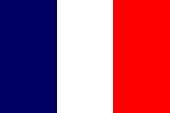
Flag of France,
ratio = 2:3,
Source, by: Corel Draw 4






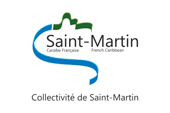
since 2010,
unofficial local flag and flag of the Collectivité,
ratio = 2:3,
Source, by:
World Statesmen,
Flags of the World



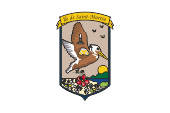
since 2010,
unofficial local flag and flag of the Territorial Council(?),
ratio = 2:3,
Source, by:
World Statesmen,
Flags of the World




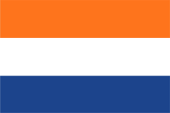
1631-1633,
St. Martin is a colony of the Netherlands



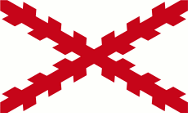
1633-1648,
St. Martin is a colony of Spain



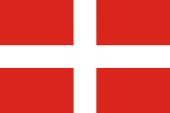
1651-1665,
French part of St. Martin is a fiefdom of the Order of Malta



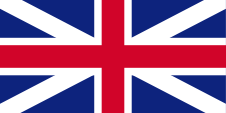
1672-1679,
French part of St. Martin is occupied by England





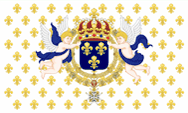
1679-1689, 1699-1702, 1779-1781,
the entire island is occupied by France




1781-1784, 1801-1802, 1810-1816,
French part of St. Martin is occupied by United Kingdom





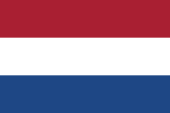
1703-1713, 1793-1794,
French part of St. Martin is occupied by the Netherlands






from 1816,
French part of St. Martin comes finally to France





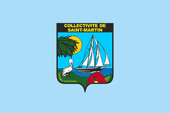
2007–2009,
unofficial local flag and flag of the Collectivité(?),
ratio = 2:3,
Source, by:
World Statesmen,
Flags of the World




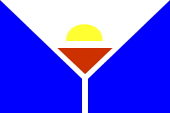
spread in the internet, but most probably incorrect flag,
Source, by:
Flags of the World,
Wikipedia (D)






All French colonies had no own flag over a long period. It had to be hoisted the French tricolor. This in principle usual until today. The status of the colonies changed over the years. Some of them are now overseas departments, and thus a ultraperipheric part of France and of the EU; others are overseas communities, autonomous, and not a part of France or the EU. Overseas departments belong – in contrast to the departments of the motherland – to no administrative region of France, they are a separate region. The territorial entity has therefore officially to use the flag of France. However, the General Council as the highest elected collegial body of a French Department and the Regional Council as the highest elected collegial body of a French Region can have their own flags. These flags of departments and regions, however, have oftenly the appearance of company flags with logos or even stylized images, appear carelessly, ahistorical, technocratic and modernist, because in the strictly centralist France is avoided any regionalism or even a historical subscription. Because of that these logo flags of regions are unpopular and are rarely used.
The sources on the other flags of the country are rather poor, the flags are known to some extent, but difficultly to assign. Therefore, the following text does not claim to be correct:
The flag of the Regional Council shows the logo of St. Martin, two loops in blue and green, which are intended to represent the letters S and M, further the inscriptions "Caraïbe Française", "French Caribbean" and "Collectivité de Saint-Martin". The logo is officially used, everywhere at all pronouncements of the authorities. For private and tourist purposes, there is a kind of crest, called emblem, which is presented on a plain white bunting. Until 2010 – when a new emblem was adopted – is mentioned a pale blue bunting. Another wide spread flag is apparently started as a hoax and ended up in the Internet as an unofficial flag of St. Martin, because it is in the internet often seen as such. On the island itself it is completely unknown and nowhere to be seen. Its creator took apparently the similarity in the writing of the words "Martin" and "Martini" as an opportunity to transmit a filled and with lemon decorated martini glass on a blue flag.
Source:
Flags of the World


since 2010,
Coat of arms of Saint Martin,
Reproduction of a painted template,
Source, by:
World Statesmen

to 2010,
Coat of arms of Saint Martin,
Source, by:
Flags of the World

Logo of Saint-Martin,
Source, by:
Wikipedia (EN), Gouvernement français ,
CC BY-SA 3.0 FR, via Wikimedia Commons

For private and tourist purposes, there is a kind of crest. It is just called emblem. To 2010 it showed a coastal landscape with sunrise, palm branches and a sailing ship. In the foreground was to see a pelican, as a representing the regional fauna, and a flamboyant flower, representing the regional flora. A golden inscription in the black head of the shield showed the golden inscription: "Collectivité de Saint-Martin", another inscription in the bottom of the shield showed: "Caraïbe Française". With a competition was created a new emblem in 2010. It shows again the pelican, but now flying up, also yellow butterflies; and further Flamboyant and Coralita flowers, the border monument, salt, sea, sunrise, mountains and sea shells. All these motifs already appeared in 1648 on the border treaty between Netherlands and France, which divided the island of St. Martin. The head of the shield is decorated with a golden banner with the inscription "Ile Saint Martin".
Source:
Flags of the World

Location:
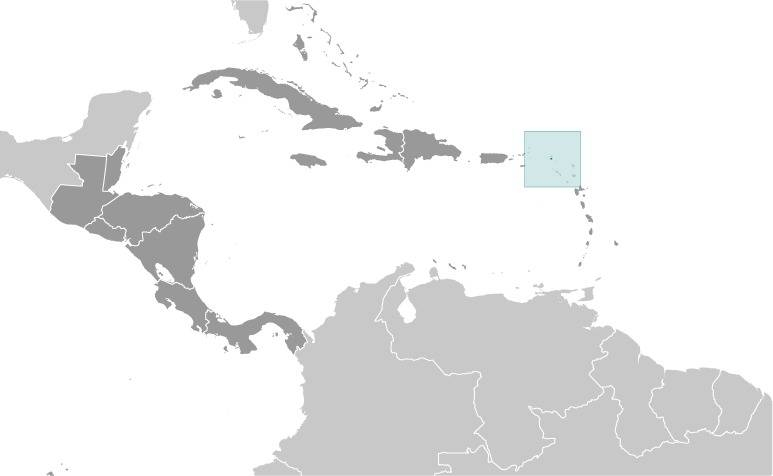
Source: CIA World Factbook
Map of the country:
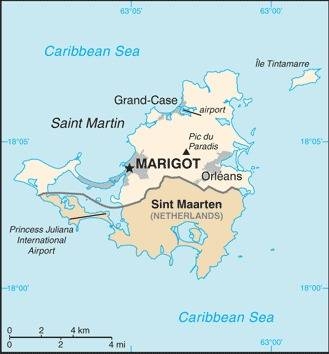
Source: CIA World Factbook
Map of the country:

Source: Freeware, www.worldatlas.com,
click to enlarge

Area: 20,5 square miles, the Island of St. Martin in the North of the Lesser Antilles was divided in the year 1648 between France (northern part) and the Netherlands (southern part)
Inhabitants: 34.065 (2018), Creole (Mulatto), Black, Guadeloupe Mestizo (French-East Asia), White, East Indian
Religions: Roman Catholic, Jehovah's Witness, Protestant, Hindu
Density of Population: 1.658 inh./sq.mi.
Capital: Marigot, 5.700 inh. (2006)
official Language: French
other Languages: English, Dutch, Papiamento and Spanish
Currency: 1 Euro (€) = 100 Cent
Time Zone: GMT – 4 h
Source:
Wikipedia (D),
Wikipedia (EN),
CIA World Factbook

1493 · Christopher Columbus discovers the island on 11th of November, the day of St. Martin, and calls it "Isla de San Martín"
1625 · founding of a French settlement
1631-1633 · St. Martin is a colony of the Netherlands
1633 · St. Martin is a colony of Spain
1638 · founding of a Spanish settlement
1648 · founding of a French settlement
23rd of March in 1648 · official division of the island between France and the Netherlands
1651-1665 · French part of St. Martin is a fiefdom of the Order of Malta
1672-1679 · French part of St. Martin is occupied by England
1679-1689 · the entire island is occupied by France
1689-1792 · the Dutch part of St. Martin is under administration of the Dutch West India Company
1690-1699 · the entire island is occupied by England
1699-1702 · the entire island is occupied by France
1702 · the official French part of St. Martin is occupied by United Kingdom
1703-1713 · the French part of St. Martin is occupied by the Netherlands
1744-1748 · the French part of St. Martin is occupied by United Kingdom
1759-1763 · the French part of St. Martin is occupied by United Kingdom
1779-1781 · the entire island is occupied by France
1781 · the entire island is occupied by United Kingdom
1781-1784 · the French part of St. Martin is occupied by United Kingdom
1793-1794 · the entire island is owned by the Netherlands
1794-1795 · the French part of St. Martin is occupied by United Kingdom
1795-1801 · the entire island is occupied by France
1801-1802 · the entire island is occupied by United Kingdom
1810-1816 · the entire island is occupied by United Kingdom
1816 · official restore the division between France and the Netherlands
1936 · the Dutch part of St. Martin officially takes over the Dutch spelling "Sint Maarten" as name of the country
1940-1943 · Second World War, the French part of St. Martin is part of Vichy France
July 1943 · Second World War, the French part of St. Martin goes over to Free France
1946-1963 · the French part of Saint Martin belongs to Guadeloupe
1963-2007 · the French part of St. Martin and St. Barthélémy form - as a part of the Guadeloupe - the "Arrondissement Saint-Martin et Saint-Barthélémy"
2003 · referendum in the French part of St. Martin in favor of more autonomy
21st of February in 2007 · St. Martin and St. Barthelemy are hived off the overseas territory of Guadeloupe, St. Martin becomes a separate overseas community, an autonomous overseas territory which is not part of France
Source:
Wikipedia (D),
World Statesmen

On the name-day of St. Martin, on 11th of November in 1493, Christopher Columbus discovered the island, and calls it on this occasion "Isla de San Martín". The island became divided in 1648 between France and the Netherlands. Generally valid is the name "St. Martin", but the French part of St. Martin's is called "Saint-Martin", the Dutch part is called "Sint Maarten". Holy Martin lived from 316 to 397 A.D. was Bishop of Tours and divided as soldier his coat with a beggar.
Source:
Wikipedia (D),
Wikipedia (EN)


| ![]()





































